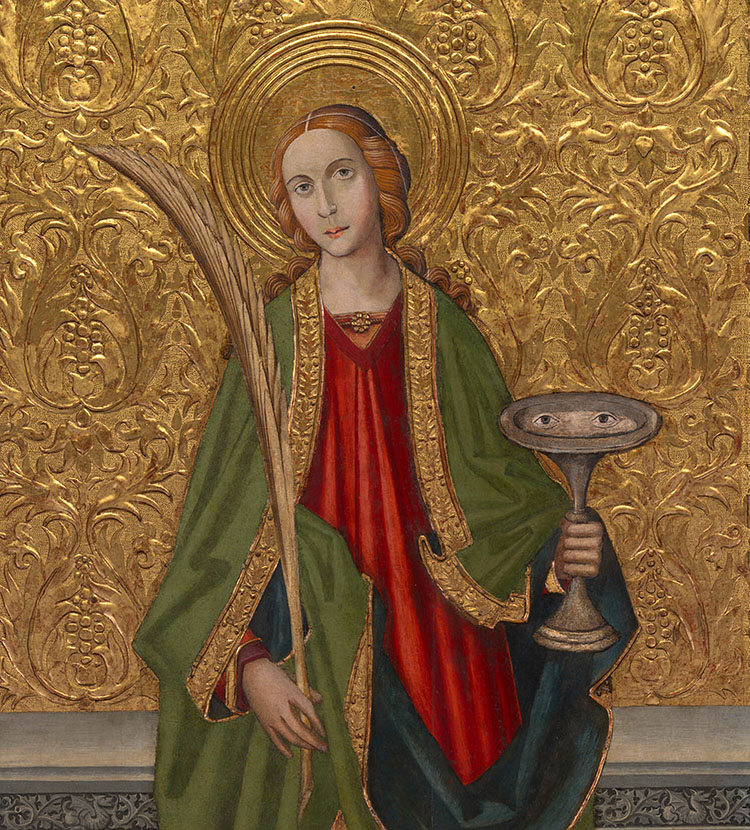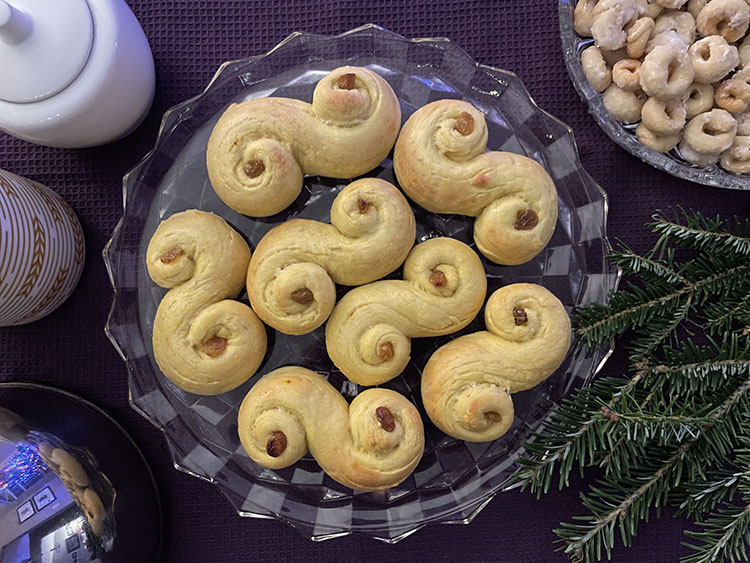
December 13th
St. Lucy (also known as Saint Lucia) was one of the early Christian martyrs, killed because of her religious beliefs around 304 AD, during the reign of the Roman Emperor Diocletian
Born into a wealthy family in Sicily, tradition says that Lucy, after dedicating her life to Christ, refused to marry a pagan man whom she was promised. Instead she devoted her life to Christian service and gave all her money and possessions to the poor. The man who she refused to marry was unhappy and reported her to the authorities. She was brought to court and eventually executed.
In a particularly cruel act before her execution, Lucy?s eyes were gouged out. However, the story goes that even without her eyes, she could still see. Commemorating this story through art, paintings of St. Lucia, such as the 1500 painting by Raphael Vergos pictured above, often depict Lucy holding her gouged out eyes on a plate!
Her feast day on December 13th falls during some of the shortest and darkest days of the year. Her feast is a reminder that even in the darkest of times, we can still see with eyes of faith. And, of course, the name Lucy means light. Following St. Lucy means learning to see with eyes of faith in a dark world.
St. Lucia?s Day is celebrated as a festival of lights. Sweden, in particular, observes St. Lucia Day as one of their most cherished Advent celebrations. In addition to community parades and processions, families observe the special day by having the eldest daughter portray Lucia. With a crown of lighted candles on her head she serves freshly baked breads, pastries and hot drinks to her family. Lussekatter, a Swedish saffron bun, is a traditional bread used on St. Lucia?s Day and one of our recipes for this week. Notice that raisins are placed in the spirals of the saffron buns, representing St. Lucy?s infamous eyes!
